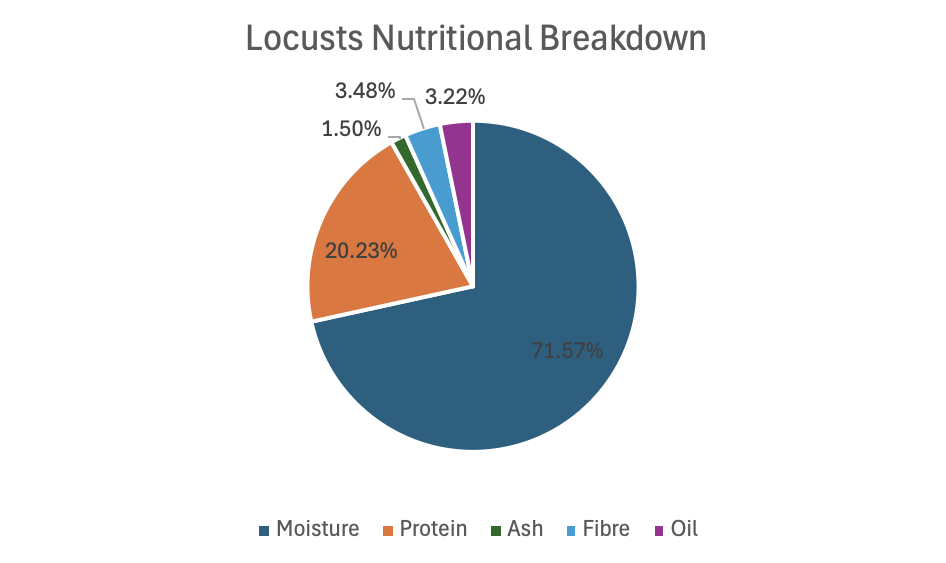Available in 6 sizes Locusts originate from Africa and can travel as far as Southern Europe in hot weather. The two species most bred as Livefoods are Schistocerca gregaria (desert locusts) and locusta migratoria (migratory locusts). Livefoods Direct breed the Schistocerca gregaria species which are a much more attractive colour. Hatchling locusts start off creamy white, by the time they reach small they are cream and black. Medium, large and extra-large locusts are vivid yellow and black. Young adult locusts are pink but turn creamy white and eventually yellow when they are fully mature.
Adult Locusts are probably the largest live food insect source that are farmed or bred for the live food industry. Locusts have an amazing growth rate, from hatching out of its egg pod to being able to reproduce itself the locust will take 42 days. That is if the locusts are kept in ideal conditions.
A locust’s diet is vegetarian, Livefoods Direct locusts are fed on organic cabbage which is grown specially for us and is insecticide free and progrub. Locusts provide more nutrition than other live food insects due their high fibre diet. Locusts should reach approximately 6cm. It is not only the size of Locusts that make them an attractive food source to predators, but the bright yellow wing case and abdomen, making a perfect treat for large chameleons or geckos, slightly slower than crickets, they are easier for lizards to catch and eat. Locusts are also valuable for large birds such as Jays, Magpies and other Corvids, Jay-Thrushes etc. Small and medium sized locusts are an important part of the diet for many rearing soft-billed birds.
Locusts are particularly good for feeding indoors as any escapees will find it impossible to survive for long.
Locusts should be stored in a warm, dry place. Bulk locusts should be unpacked as soon as they arrive. A large box or tank with a tight-fitting lid is suitable although ventilation must be provided by way of perforations or by cutting a large hole and covering it with steel or plastic mesh such as a fly screen. High humidity is harmful to locusts, the ideal temperature of 25-30°C can be maintained by mounting a suitable size light bulb in the tank.
Perching sites must be provided in the form of egg packing trays to reduce stress and cannibalism. These can be placed vertically around the sides of the tank. A source of dry food must be provided such as progrub or failing this, bran can act as a substitute. Fresh cabbage leaves should be provided daily. Uneaten old leaves should be removed, and a jelly pot can be added for moisture.
Prepacked locusts can be stored in a warm, dark place for several days if extra progrub is added to the tubs. Ideal temperature is 20-22°C.




